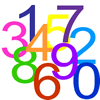Skip over navigation

Missing Multipliers
Number Pyramids
More Number Pyramids
Finding Factors
Integration Matcher
Function Pyramids
Inverse Problems Save the Day



Or search by topic
Number and algebra
Geometry and measure
Probability and statistics
Working mathematically
Advanced mathematics
For younger learners
Working Backwards, Leaping Forwards

Working backwards, leaping forwards
In mathematics lessons, you might be given a question and asked to work out the answer, but these problems are a little bit different! To solve them, you'll need to think about the relationships between functions and operations and their inverses, and work backwards in order to leap forward!
Missing Multipliers Age 7 to 14Challenge Level 


Age 7 to 14
Challenge Level 





What is the smallest number of answers you need to reveal in order to work out the missing headers?
Number Pyramids Age 11 to 14Challenge Level 


Age 11 to 14
Challenge Level 





Try entering different sets of numbers in the number pyramids. How does the total at the top change?
More Number Pyramids Age 11 to 14Challenge Level 


Age 11 to 14
Challenge Level 





When number pyramids have a sequence on the bottom layer, some interesting patterns emerge...
Finding Factors Age 14 to 16Challenge Level 


Age 14 to 16
Challenge Level 





Can you find the hidden factors which multiply together to produce each quadratic expression?
Integration Matcher Age 16 to 18Challenge Level 


Age 16 to 18
Challenge Level 





Can you match the charts of these functions to the charts of their integrals?
Function Pyramids Age 16 to 18Challenge Level 


Age 16 to 18
Challenge Level 





A function pyramid is a structure where each entry in the pyramid is determined by the two entries below it. Can you figure out how the pyramid is generated?
Inverse Problems Save the Day Age 14 to 18Challenge Level 


Age 14 to 18
Challenge Level 





Related
You may also like
Patterns in Number Sequences
These resources are designed to get you thinking about number sequences and patterns.
Reasoning Geometrically
These resources are designed to get you thinking about geometrical reasoning.
Reasoning with Numbers
These resources are designed to get you thinking about reasoning with numbers.

